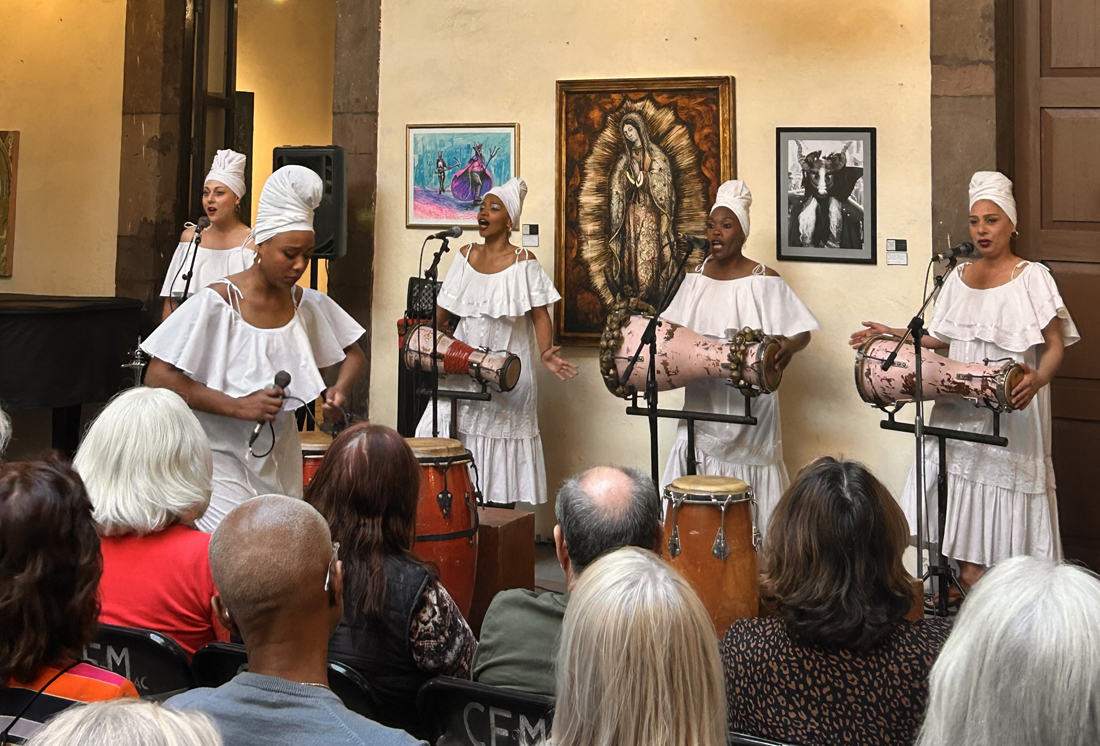
November 12, 2023
by Richard Adelman
Last Friday night (Nov. 3) Lokkal Foundation produced and Casa Europa hosted an exciting performance by Obiní Batá, an all-women Afro-Cuban folkloric group. In Lukumí, the Cuban adaptation of the Nigerian Yoruba language, Obiní Batá means "Women of the Bata," bata being a set of three hourglass-shaped drums principally used in the Afro-Cuban religion, Santeria, "the worship of the saints."
These "saints" are actually African deities, orichas, which have been syncretized with Catholic saints. That is, the slaves pretended to be worshipping a Catholic saint as camouflage for worshipping an oricha, who shared some characteristic with the saint. For example, Chango and Santa Barbara both are connected to lightning. This was a way for the slaves to deceive their masters and keep their African religion alive.
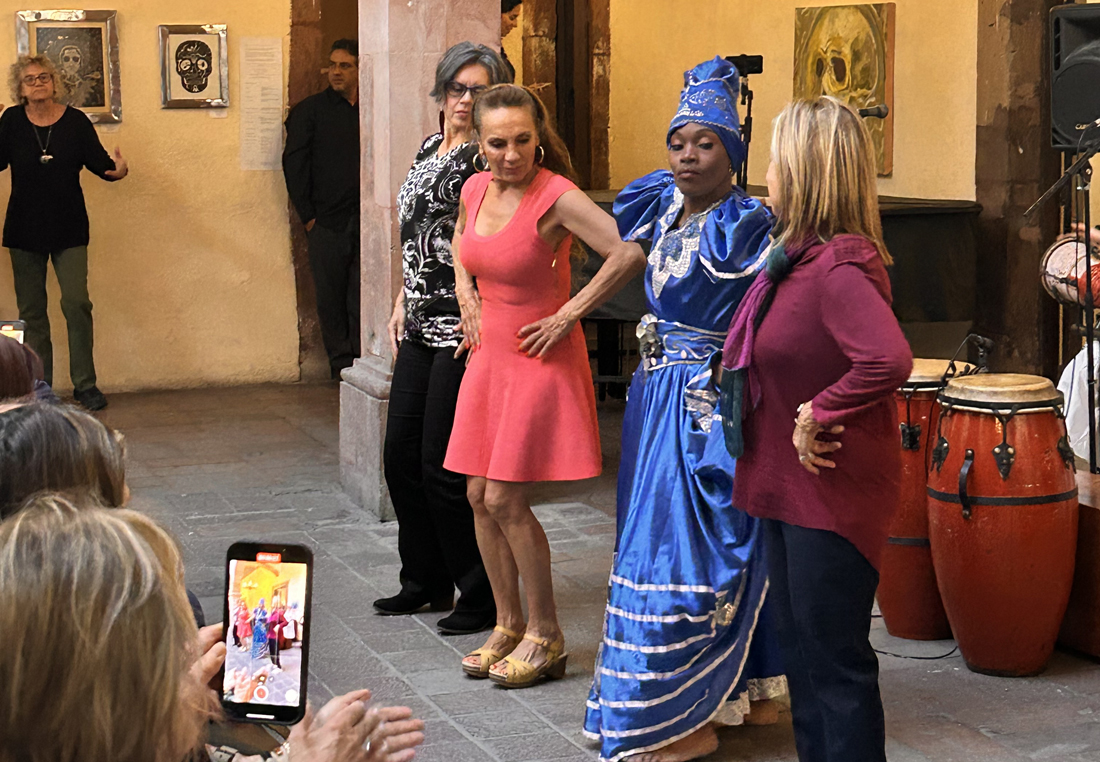
Most of last Friday night's music was esoteric and secretive, used as it is the Santeria religion to invoke African deities and bring about spirit possession among the initiates. Today, there are Santeria practitioners in many countries all over the globe. Voodoo in Haiti is also based on spirit possession and mixes Catholic elements into its ceremonies.
The tonality of the drum rhythms imitates the rising and falling of the Yoruba language and "speaks with" the orichas, inviting them to come down and mount the head of their worshipper. As each oricha has his own songs, dances and ritual objects. These are all woven together to facilitate spirit possession.
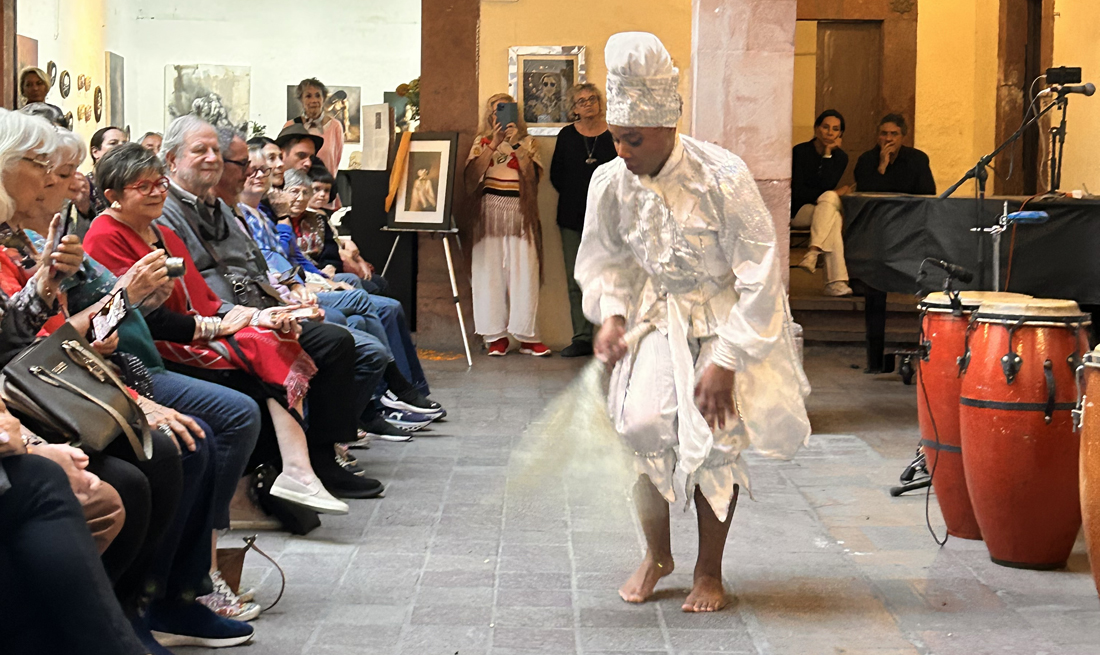
This music was first publicly performed in Cuba in 1936. The first time I heard it was on a record in Berkeley, California in 1961. In that era our group of fanatic aficionados of Cuban music had to order records from New York based on advice from knowledgeable people including Mongo Santamaria and one of Eddie Palmieri's trombonists.
The first person I met who had a lived experience of Santeria was Gus Segrade, a leftwing, Puerto Rican, intellectual, Spanish professor, whom I accompanied on congas at Cuban poetry reading for Black Panther Huey Newton's birthday party in 1976. His opinion of Santeria was agnostic and cautious: "My grandmother used to take me to ceremonies. Now I don't believe or disbelieve in it, but I don't mess with it."
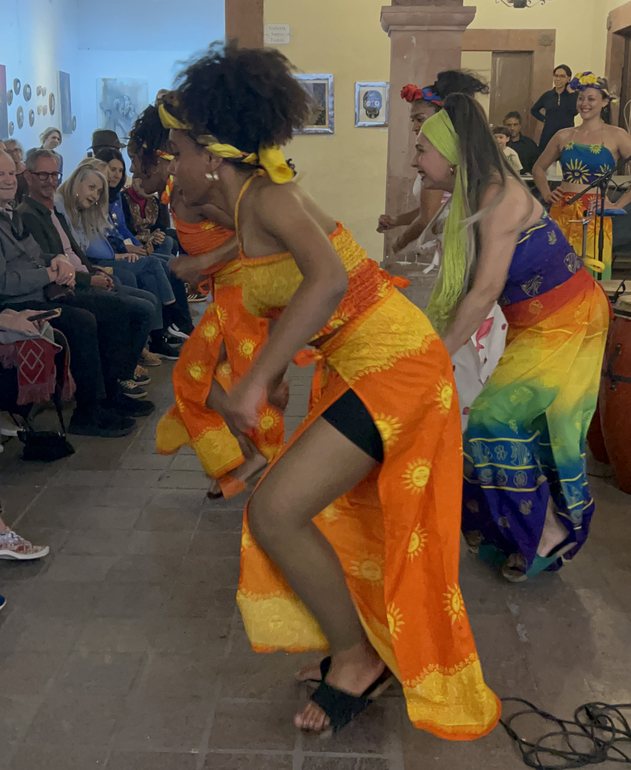
In the 70s in the Bay Area there sometimes were public performances of Santeria drumming and singing. It was thrilling for me to experience the sounds that I had been hearing only on records, come alive in three dimensions.
Spirit possession, a central part of Santeria rituals, has been described as "the white darkness." Personally, I did experience a sensation of being transported once while I was drumming for a Haitian ceremony. My teacher put his arm around my shoulders to hold me gently, and simply told the spirit to go away. His motivation may have been pragmatic in that he wanted me to be able to keep accompanying him.
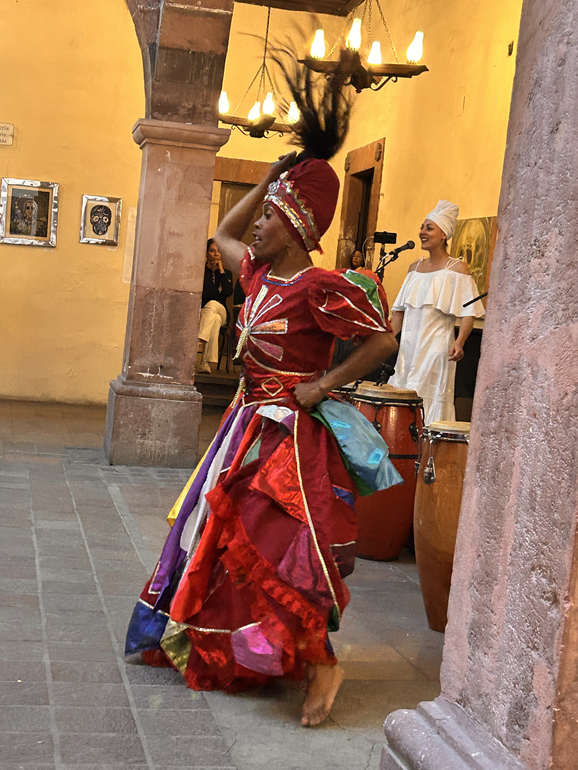
Another time I was invited to watch a rehearsal of my Cuban drum teacher, the first expert white bata drummer in the US, playing. I felt I could easily have been possessed if I allowed it, but I controlled myself because I did not want to disrupt their rehearsal. Later, when I told my teacher about this, he said that it was too bad I had inhibited myself, as they would have been happy to stop the rehearsal and take care of me. (Under possession people need to be cared for.)
Complicating the discussion is the question of real vs. fake possessions. It is recognized that sometimes adepts will fake being possessed. In general people need to "learn" to be possessed, which includes observing other people in that state. On the other hand, there are many instances of white Americans or Europeans simply wandering into a ceremony (in New York City or Cuba) where batas are being played and becoming unexpectedly and genuinely possessed. Some say that one criterion of a genuine possession is that one does not remember anything.
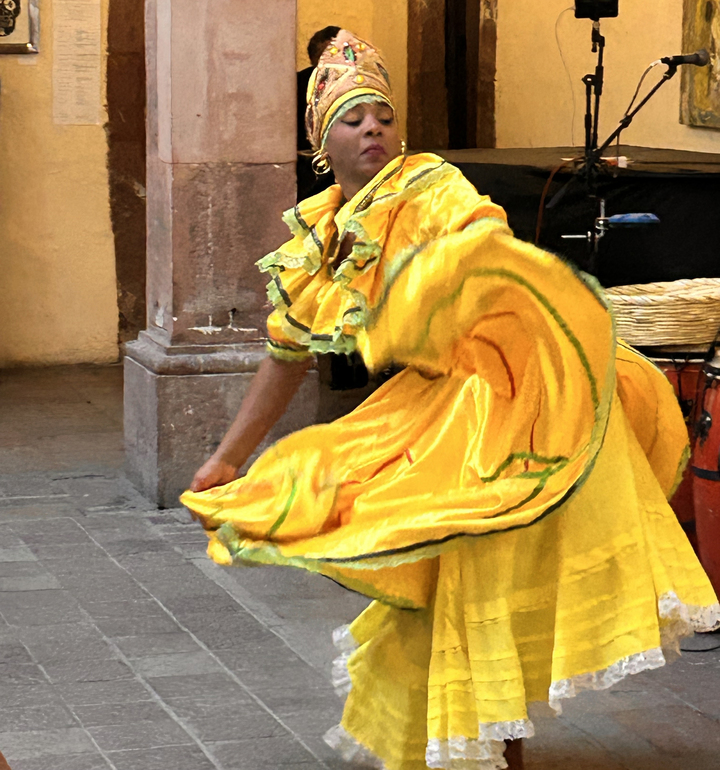
As you may have heard, while possessed people can display superhuman strength. I have witnessed people handling hot coals without being injured. During a voodoo ceremony in Brooklyn for which I was playing, a 28-year-old Haitian dance teacher was catapulted around the room by a force appearing to be inside him. As is common, the ceremony was in a basement with a concrete floor, pillars, and no soft surfaces. It took four men, including me, using all our strength to hold him still so that he would not hurt himself. He was possessed by one of the Petro loas (the Haitian word for oricha). Some believe that these powerful loas may have facilitated the successful Haitian revolution against the French in 1789.
One of the things that is unique about Obiní Batá, the group that played Friday night, is that they are women playing bata drums. Traditionally women were banned from learning. Eventually these barriers broke down. Now anyone can study bata for non-religious purposes. There are numerous female bata drummers worldwide, including two very accomplished good friends of mine in the Bay Area.
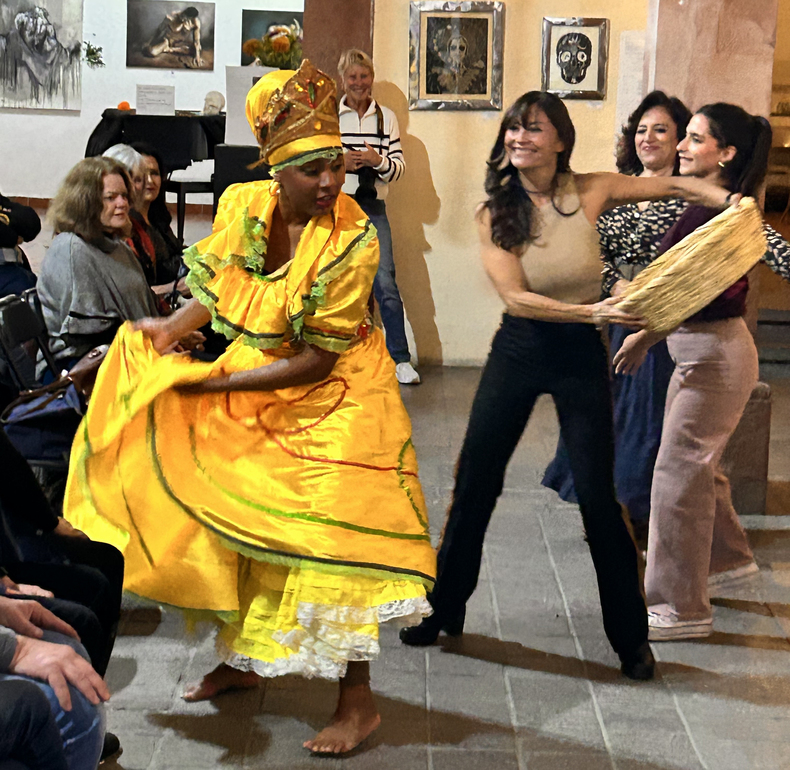
The batas played in Friday's performance were a secularized form of the consecrated ones used in ceremonies, which are "fed" a mixture of blood and herbs to give them power. Women are still forbidden to play these consecrated drums and therefore cannot play in ceremonies. The reason given for is that menstrual blood will negate the sacred power of the blood inside the drums.
Friday's performance was impressive. All the women sang, danced, and drummed with fluidity, grace, strength, and passion. Frequently the drummers danced and sang while drumming. Believe me, this requires a highly-developed sense of African polyrhythmicity.
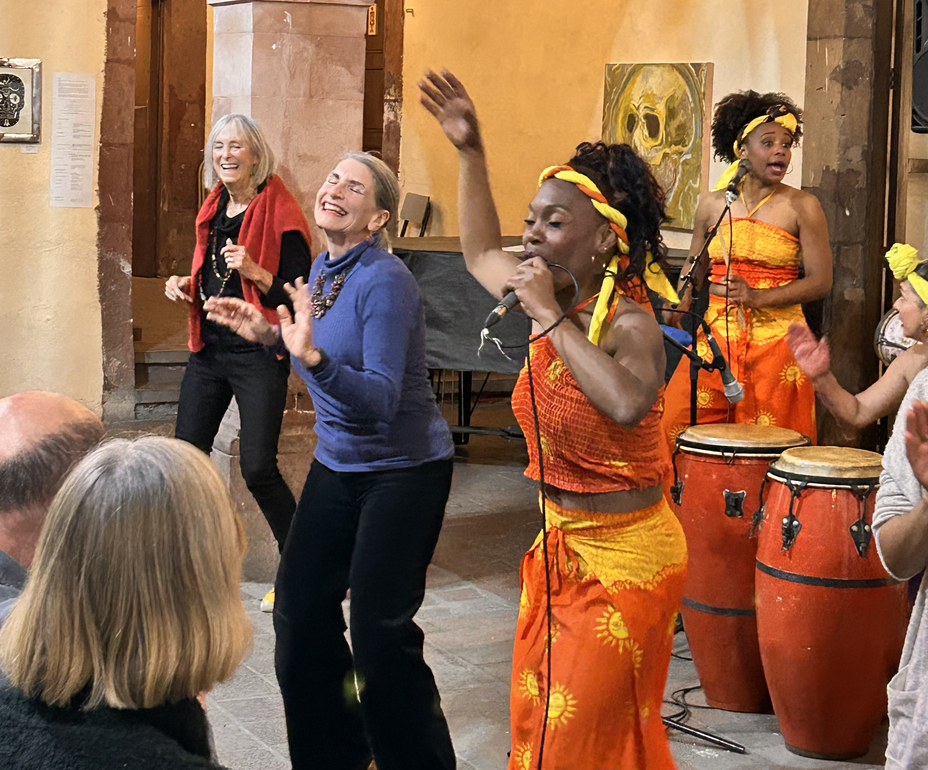
Traditionally, there is a rigid hierarchy among the three bata drummers, each person specializing in playing only one particular drum, playing distinct parts which vary in complexity. In Friday's performance they easily interchanged drums, which means they each have mastery of all the drum parts. Maybe there is a feminist matriarchal element to this flexible non-hierarchical approach.
Another thing that differed from other Cuban folkloric performances I have seen was that audience participation was encouraged. We were encouraged to clap on the dominant beats of the music. (Audience members enjoyed this, but I found it annoying as it interfered with my hearing the subtlety of this very complicated music.) Some people spontaneously got up and danced while others were happily dragged to the front.
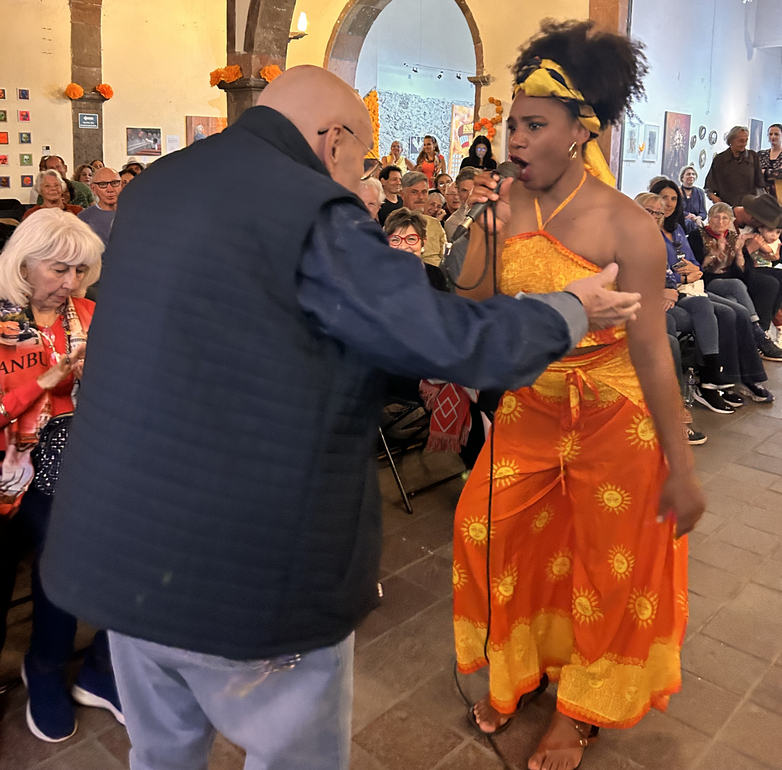
One song they played is one of my favorites, a rhythm which I have been studying since 1973. It can be complete as the group was playing it, with singing, bell, and beaded gourds. However, it frequently has one conga in the ensemble as well. During the song, since there was a conga sitting there with nobody playing, unable to contain myself. I got up and jumped in. I am glad that I did.
This group, Obiní Batá, originally sprang from the Conjunto Folkloric Nacional, founded in 1962. Like the Folklórico, most of Friday's performance was devoted to religious music: song and dance of the orichas. Then, during second part of the show, they move to the secular, including poetry, pregones (street vendors songs), conga de carnaval, a son montuno, and finally rumba guaguancó, the rhythm most beloved by conga drummers worldwide, which forms much of the basis of salsa. Typically the Folklórico enacts a dramatization of a spirit possession but that seemed to be missing from this performance.

If you had been at the performance you would have joined in my goodbye to the group, "Gracias y espero que regresen pronto," Thanks. I hope you come back soon. Don't miss them when they do.
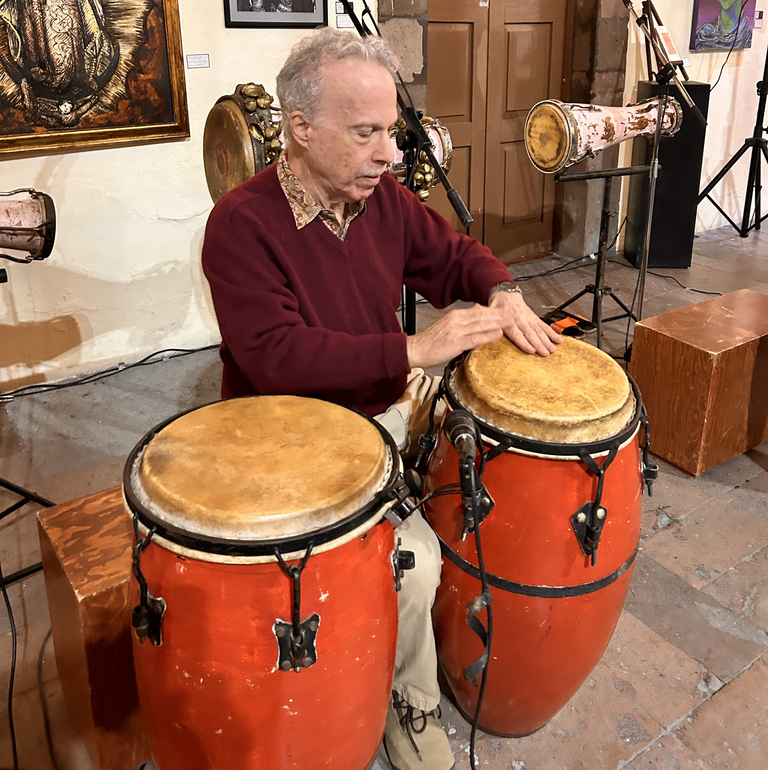 **************
**************
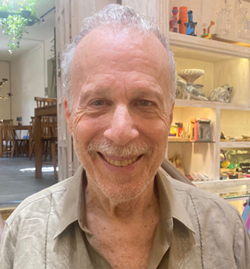
Richard Adelman, MA Psychology, has been a conga and bongo drummer since the 1950´s and a teacher of those since 1970. Having studied with Cuban and Haitian master drummers in New York, Cuba, and San Francisco, he has taught Afro-Cuban and Haitian drumming to thousands of students over the years. In San Miguel he has played with Gabriel Hernandez and currently plays with a salsa group, La Libertad, every Thursday at La Choperia.
To deepen and enhance his drumming, his music teaching, and his life, Richard began studying the Feldenkrais Method and other body therapies in 1973. He maintains a private and group practice in San Miguel in Feldenkrais movement and hands-on work, a gentle form of Pilates, and Formative Psychology. He sees patients in his office in Centro and at their homes. He also teaches Awareness Through Movement Classes for Seniors at Salón Semilla in Mercado Sano (Mondays and Wednesdays, 12-1:30pm) and gives hands-on therapy in the TOSMA Saturday Market.
Whatsapp 415 197 7895, richardadelman@gmail.com
**************
*****
Please contribute to Lokkal,
SMA's online collective:
 ***
***
Discover Lokkal:
Watch the two-minute video below.
Then, just below that, scroll down SMA's Community Wall.
Mission

Visit SMA's Social Network
Contact / Contactar

